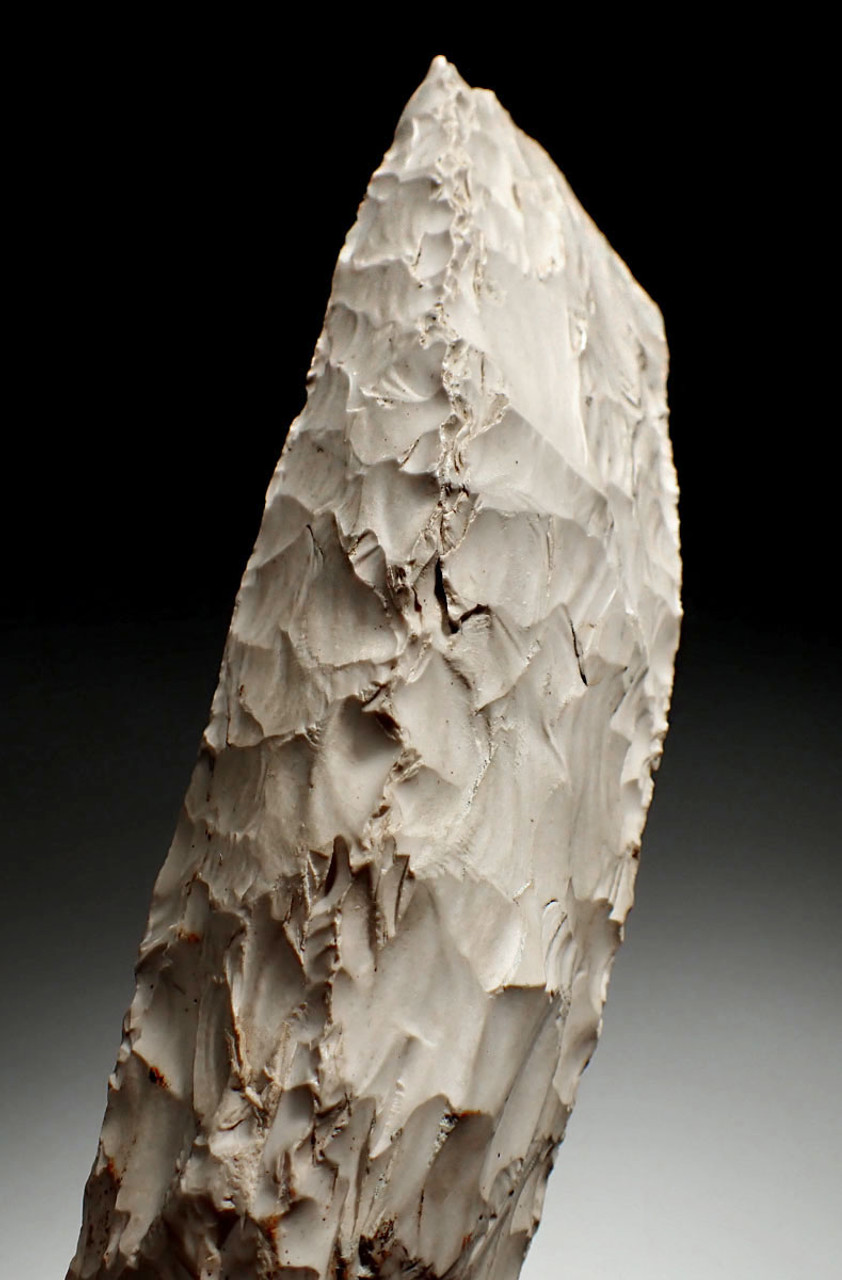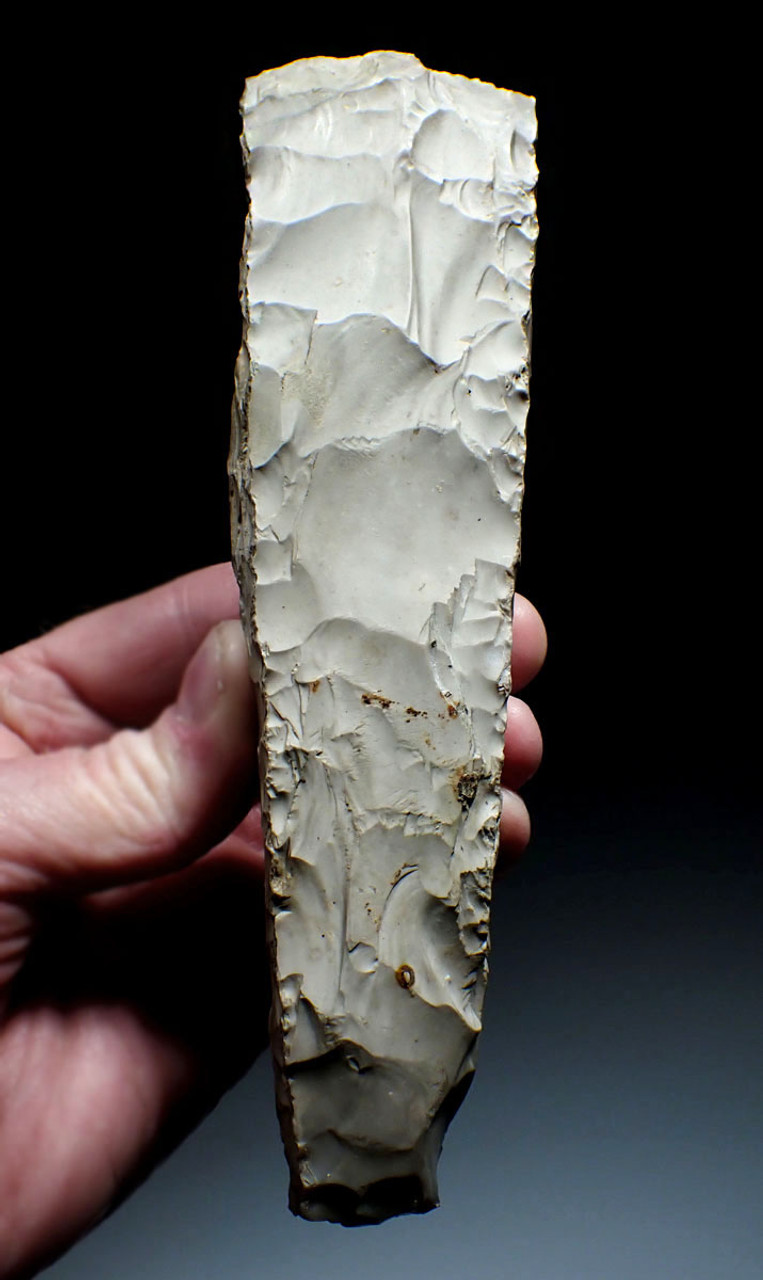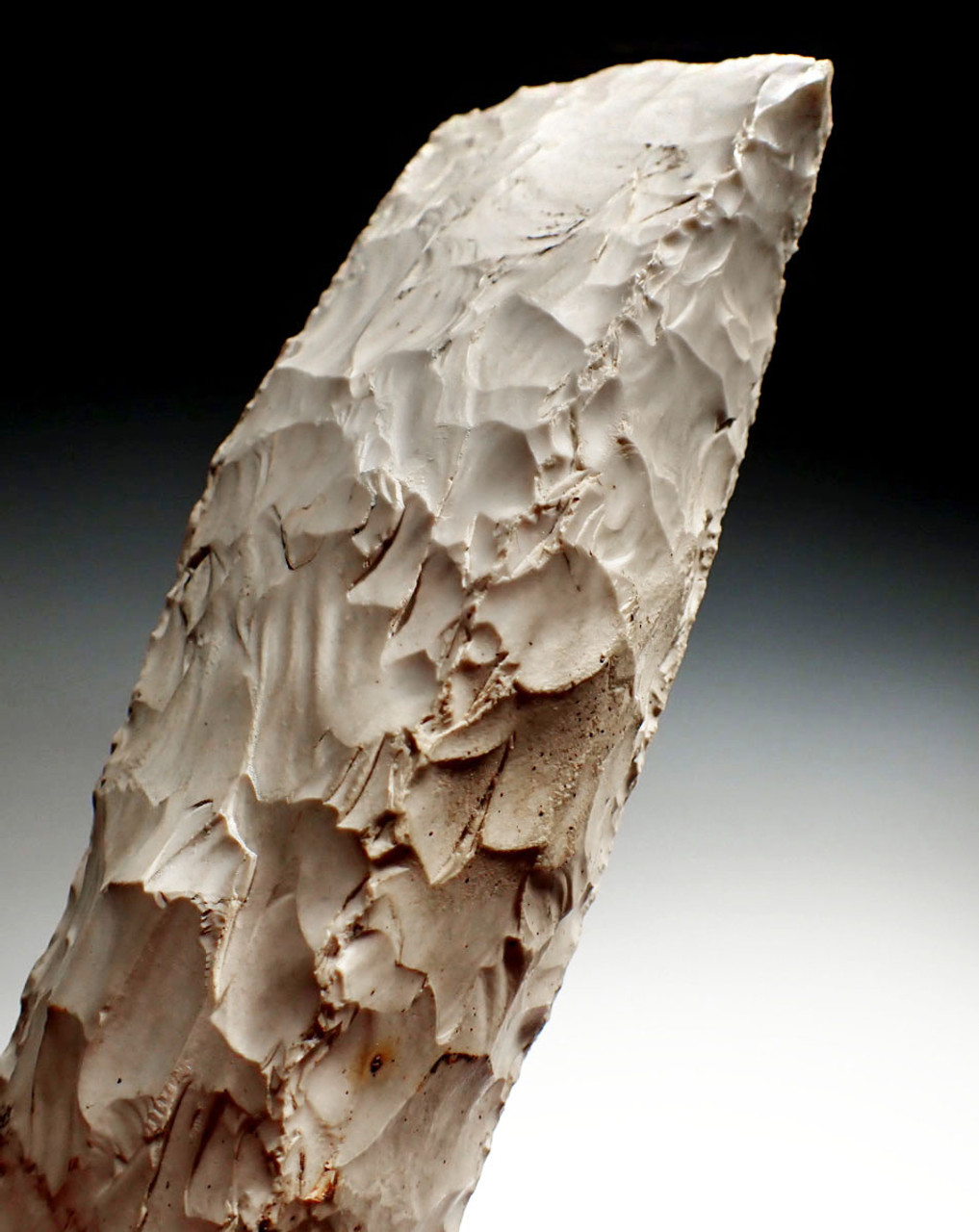Product Description
SEE MORE EUROPEAN NEOLITHIC ARTIFACTS
One of the most iconic flint artifacts of the Scandinavian Neolithic Danish Neolithic period are the rectangular prestige flaked flint axes (later ones were additionally ground and polished). This is one of the earliest forms of these famous Neolithic axes where the entire surface was only flaked, not ground or polished. The flint has been patinated a variety nearly white by burial in a wet environment, for thousands of years. Many of these Neolithic axes are found in farming fields and often broken or badly damaged by the plows before they were discovered. This fine example shows no such damage and is complete in perfect preservation. The chopping edge is still sharp with some of the finest secondary flaking we have ever seen in an early example such as this! Considerable care and time were put into the manufacture of many of these axes and examples with exceptional form and workmanship such as this specimen, indicate it was an object of status ownership and prestige, as much as it was an actual tool or weapon.
The way these axes were made is identical regardless of the size. A piece of flint was carefully shaped by grinding and flaking the stone. Further flaking squared up all the sides to the chopping end. Early forms were left only flaked. Later, the axe shapes were refined by grinding and the chopping end was later sharpened by grinding. No grinding can be found on this axe and its shape shows it was a product of pure masterful flaking. It was found in Gram, Southern Denmark, on an Early Neolithic settlement site once inhabited by people of the Funnel-Necked Beaker Pottery Culture of Northern Europe. While we have offered numerous flake tools, axes and some daggers from this culture, this is the LAST flaked Neolithic axe we have to offer.
Original iron and ground minerals and sediment are still intact in hinge fractures - an indicator ONLY seen in AUTHENTIC specimens. This Neolithic artifact is a supreme example of the workmanship of a skilled tool maker from the earliest of north Europe's farming society. Genuine tools from the Funnel-Necked Beaker Pottery Culture represent an excellent opportunity to acquire a genuine stone tool artifact from some of the world's first farming peoples!
NOTE: As popular and valuable as these iconic flint objects are from Neolithic Europe, they are one of the most commonly faked items from this culture. For 100 years, forgeries have been made and patinated by a variety of ingenious methods. Altered (improved) original examples are also problematic as many of these are found damaged in farm fields from the plow machines. The only way to authenticate
HISTORY
The earliest food-producing communities of Northern Europe belonged to the Funnel-Necked Beaker Pottery Culture. This culture existed from 6200 to 4800 years ago in the Northern-most European region. The pottery produced by these earliest farmers had a distinctive necked design. The first use of the PLOW, ANIMAL TRACTION and WHEELED TRANSPORT in north-central Europe is attributed to this Neolithic culture. Megalithic chambered tombs were employed and built into long mounds. These mounds made by the Funnel-Necked Beaker peoples still stand today in many parts of north Europe.
Farming in northern and central Europe differed from that of the more temperate southern regions of Europe, the Middle East and north Africa. The harsh winters required crops to be sown in the Spring as opposed to the Fall for the latter. Woodland grazing in the north meant more emphasis on the raising of cattle and pigs compared to the herds of sheep and goats popular in the south.
Neolithic settlements were typically small in population with only about forty to sixty people. The wooden longhouse was the main type of building which housed both people and their livestock. Postholes are all that remain today leaving burials and ritual stone structures as the only remnants of this period. Neolithic burials were either individual or communal. The communal burials were housed in large megalithic structures which were then covered with earth creating a giant mound. Offerings of stone tools, pottery and ornaments were often included in burials.
 US DOLLAR
US DOLLAR
 EURO
EURO
 AUSTRALIAN DOLLAR
AUSTRALIAN DOLLAR
 CANADIAN DOLLAR
CANADIAN DOLLAR
 POUND STERLING
POUND STERLING




























